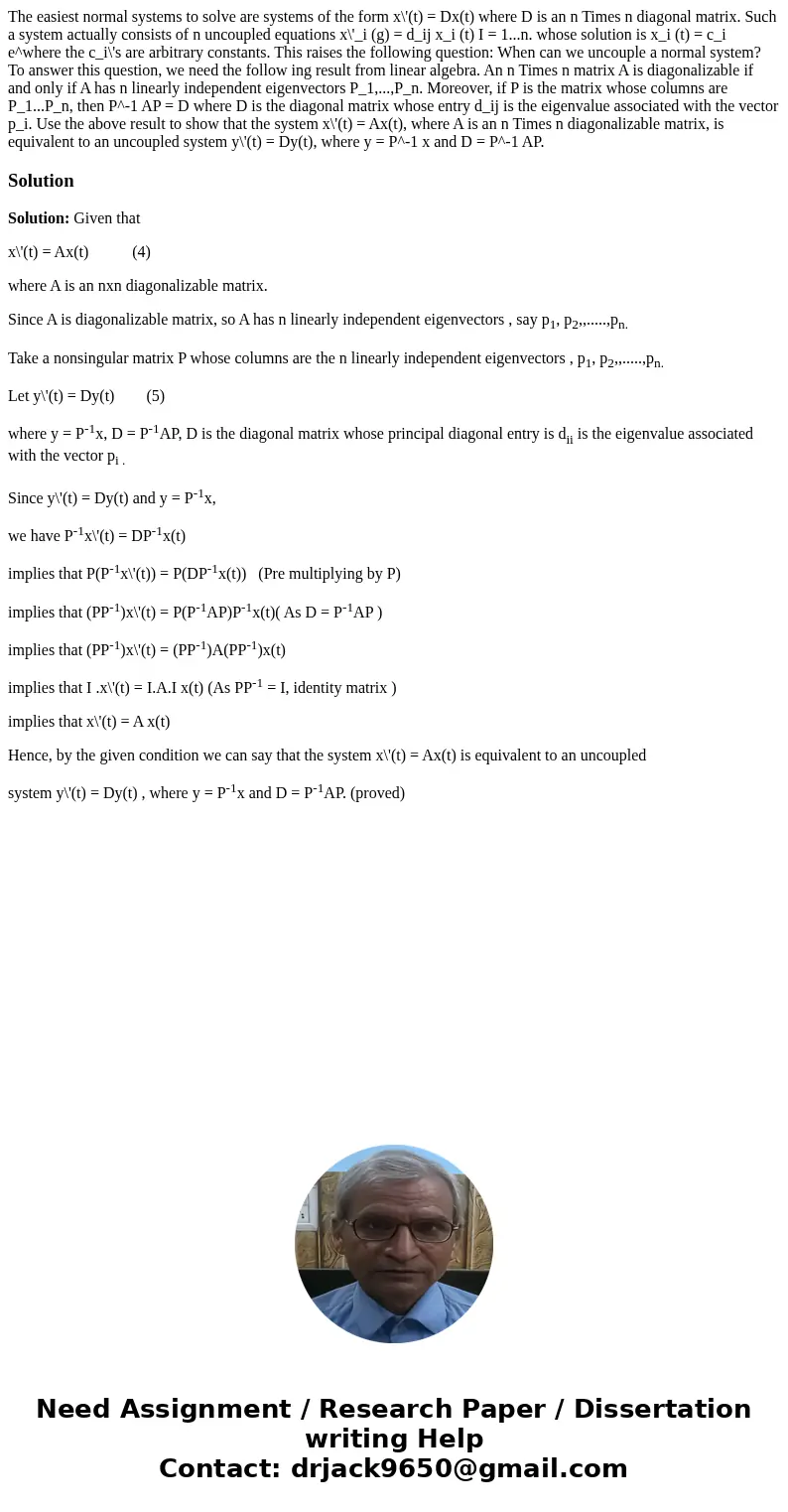The easiest normal systems to solve are systems of the form
Solution
Solution: Given that
x\'(t) = Ax(t) (4)
where A is an nxn diagonalizable matrix.
Since A is diagonalizable matrix, so A has n linearly independent eigenvectors , say p1, p2,,.....,pn.
Take a nonsingular matrix P whose columns are the n linearly independent eigenvectors , p1, p2,,.....,pn.
Let y\'(t) = Dy(t) (5)
where y = P-1x, D = P-1AP, D is the diagonal matrix whose principal diagonal entry is dii is the eigenvalue associated with the vector pi .
Since y\'(t) = Dy(t) and y = P-1x,
we have P-1x\'(t) = DP-1x(t)
implies that P(P-1x\'(t)) = P(DP-1x(t)) (Pre multiplying by P)
implies that (PP-1)x\'(t) = P(P-1AP)P-1x(t)( As D = P-1AP )
implies that (PP-1)x\'(t) = (PP-1)A(PP-1)x(t)
implies that I .x\'(t) = I.A.I x(t) (As PP-1 = I, identity matrix )
implies that x\'(t) = A x(t)
Hence, by the given condition we can say that the system x\'(t) = Ax(t) is equivalent to an uncoupled
system y\'(t) = Dy(t) , where y = P-1x and D = P-1AP. (proved)

 Homework Sourse
Homework Sourse